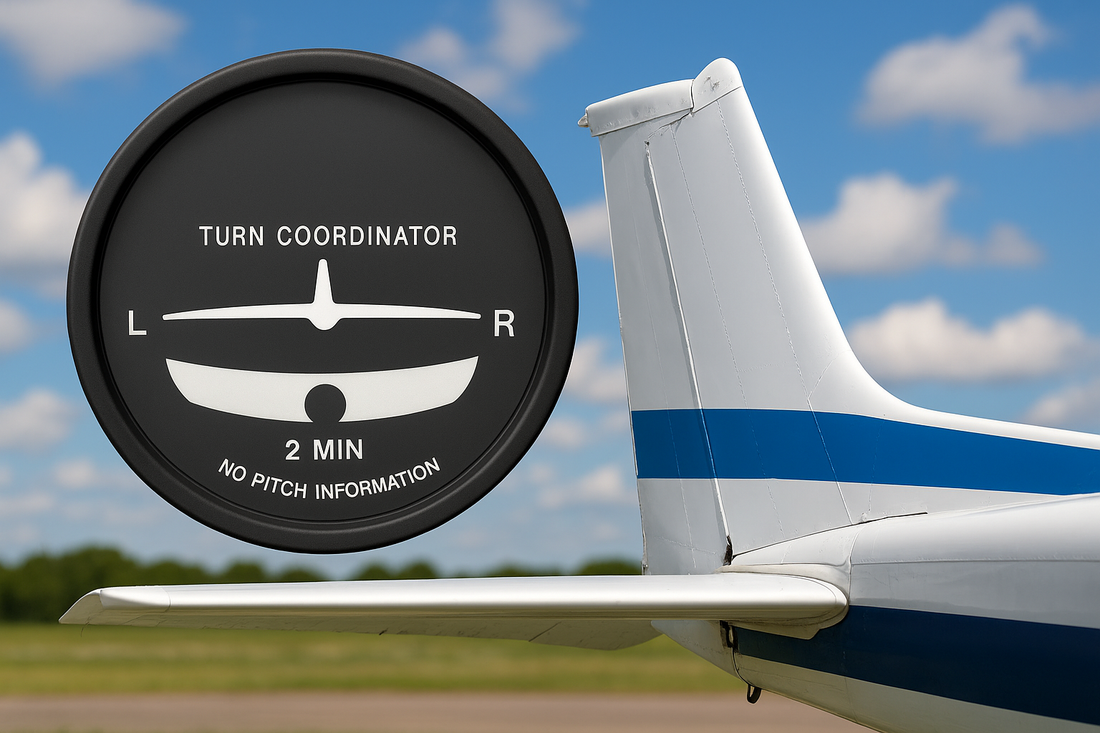
Why Rudder Awareness In Flight Matters More Than You Think
By Ashley Herrera, CFI
“Use Your Rudder!” — Every CFI Ever
If you’ve spent time flying a Cessna 172, Piper Archer, or Diamond DA40, you’ve probably heard your instructor say something like:
“Right rudder!”
“Keep the ball centered!”
“Step on the ball!”
And if you’re like most students, you probably thought, “I am using it... aren’t I?”
Here’s the truth: most new pilots think they’re using the rudder, but they’re really just giving it the occasional nudge. True rudder awareness is one of those subtle skills that separates an average pilot from a smooth, coordinated one — and it matters more than you might think.
What the Rudder Actually Does (And Why It’s Misunderstood)
Let’s start simple. The rudder controls yaw — the side-to-side movement of the airplane’s nose. But unlike in a car, you don’t use it to turn the plane; that’s what the ailerons do.
In a propeller-driven trainer, the rudder’s main job is to keep the airplane coordinated. When you roll into a turn or add power, several aerodynamic forces start fighting you for control — and the rudder is how you keep everything balanced.
You probably remember these from ground school:
-
Torque: The propeller spins one way, so the airplane wants to roll the other.
-
P-factor: At high angles of attack, the descending prop blade pulls harder, yawing the nose left.
-
Spiraling slipstream: The propwash wraps around the fuselage and hits the tail, pushing it sideways.
-
Gyroscopic precession: Pitching up or down with a spinning prop adds yawing forces.
Combine them all, and you get left-turning tendencies that require right rudder, especially during climb.
How You Know You’re Not Using Enough Rudder
Here’s how to tell your feet need more work:
1. The ball isn’t centered.
If the inclinometer ball slides right, you need right rudder. If it slides left, you need left rudder. (Easy memory trick: step on the ball.)
2. The nose wobbles during power changes.
If the nose swings side to side when you add or reduce power, you’re letting yaw slip through.
When you fly coordinated, everything feels smoother — the airplane climbs better, there’s less drag, and your passengers won’t get that queasy “sideways” feeling.
And remember: you can’t feel coordination through your hands — only through your feet and your seat.
Rudder Awareness = Safety Awareness
Uncoordinated flight isn’t just sloppy — it’s unsafe.
Take a stall, for example. If the ball’s off to one side, one wing will stall before the other, and you’ve just set yourself up for an incipient spin. That’s why every stall briefing includes,
“Keep it coordinated.”
Poor rudder awareness also plays a role in pattern accidents — overshooting final, cross-controlled stalls, or go-arounds with full power and not enough right rudder. Every one of those scenarios starts with a lack of coordination.
How to Build Better Rudder Feel
Here are a few ways to sharpen your rudder awareness and coordination skills:
1. Practice coordinated turns.
At cruise power, roll into a medium bank and keep the ball centered through the entire turn — entry, steady state, and rollout. Notice how much rudder it takes at different power settings.
2. Try “rudder-only” exercises.
At a safe altitude, keep the wings level and use just the rudder to move the nose left and right across the horizon. This builds muscle memory and helps you sense yaw.
3. Practice power changes.
Go from cruise to climb power and back while keeping the nose straight with your feet. You’ll quickly learn how much right rudder it takes on the climb, and how to ease off as you level out.
4. Fly a taildragger someday.
Nothing builds footwork like a tailwheel airplane. You’ll come back to tricycle gear flying with a whole new appreciation for the rudder.
The Bottom Line
When you first start flying, it’s easy to think of the yoke as the “main control” and the pedals as optional. But the truth is, the rudder keeps the airplane honest.
Every time you add power, bank, or change pitch — your feet should be active, keeping that airplane coordinated. Eventually, it becomes automatic. You won’t even think about it — your feet will just know.
And when that happens? Your turns are smoother, your climb outs are straighter, and your passengers stop grabbing the door handle.
That’s when you’ve truly developed rudder awareness — and that’s the mark of a pilot who really knows how to fly.
By Ashley Herrera, CFI
If you’re a student pilot looking for helpful study tools and flight gear, NorthstarVFR.com is a trusted resource designed with your training in mind. We offer carefully curated pilot supplies and study materials, including our popular Pre-Tabbed FAR/AIM, Oral Exam Guides, kneeboards, logbooks, and more. Everything is selected to help you stay organized, pass your checkrides, and fly with confidence. Check it out and set yourself up for success in the cockpit.
